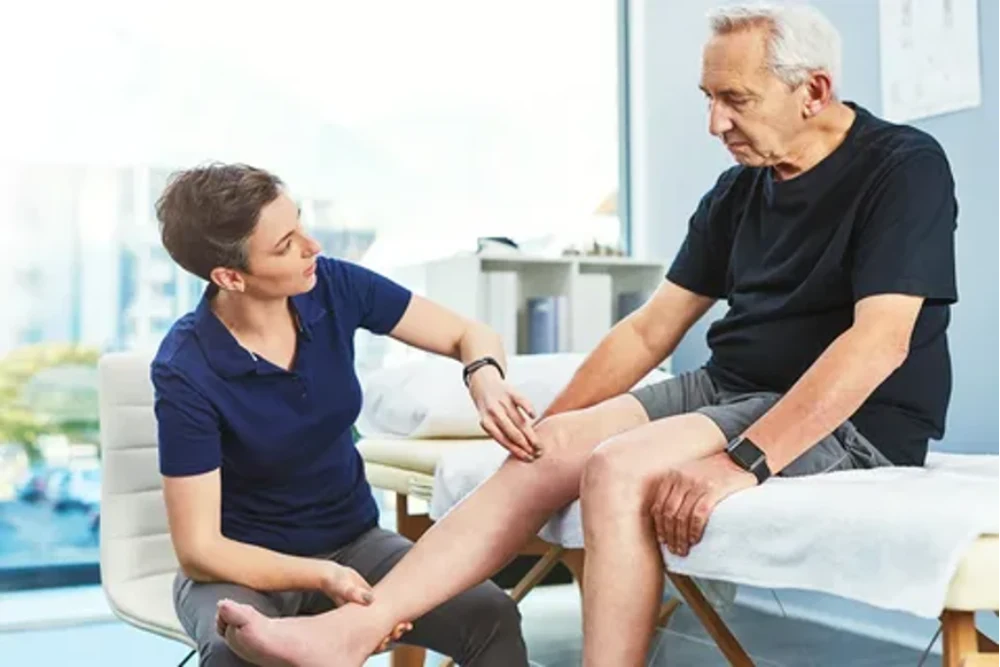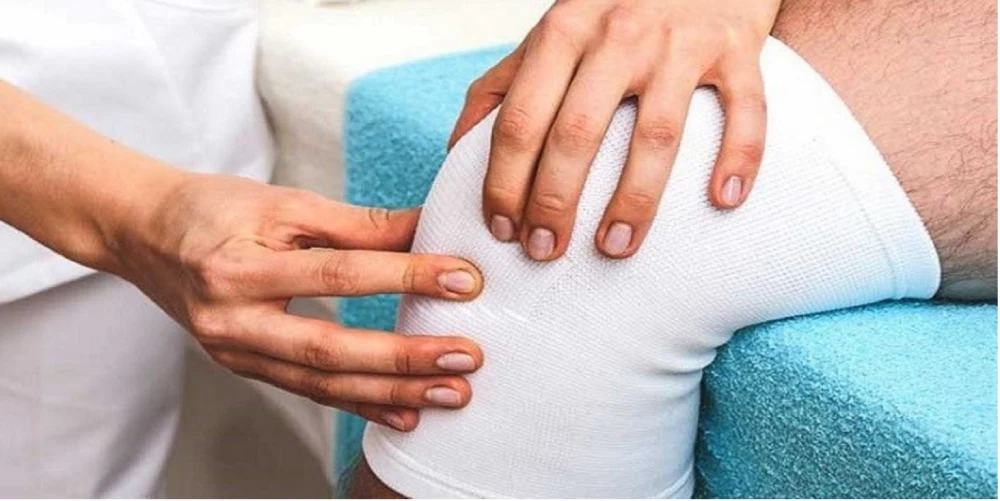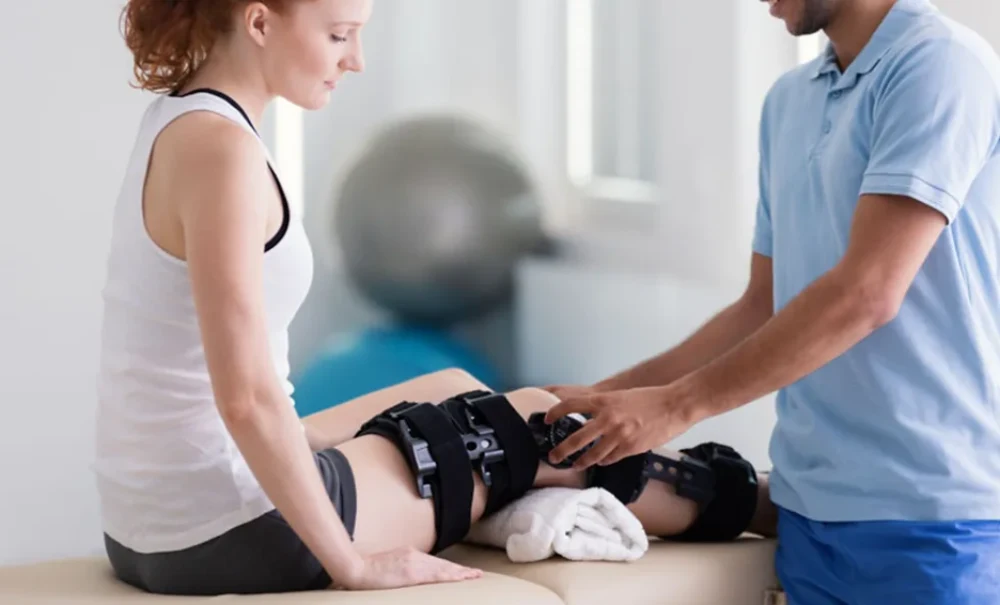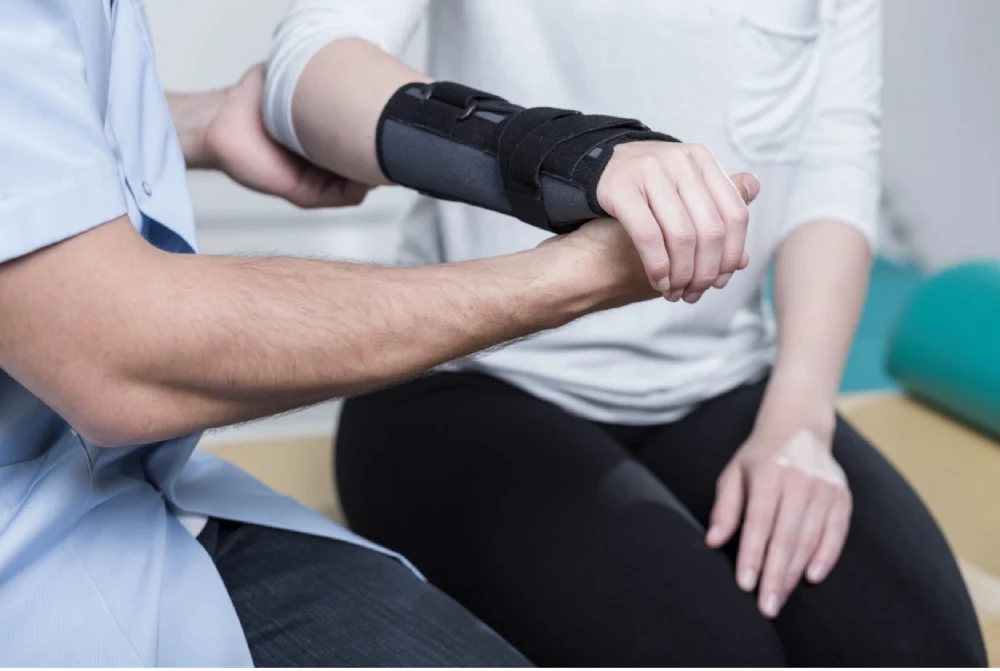The word “arthritis,” which encompasses more than a hundred distinct joint diseases and disorders, is defined by joint stiffness, pain, and inflammation. It can severely impair a person’s quality of life and make it harder for them to carry out daily tasks. By treating pain, increasing range of motion, building muscle, and resolving alignment and posture problems, physical therapy is essential for controlling arthritis. Can physiotherapy help arthritis? The advantages of physical therapy for arthritis and the different kinds of physical therapy procedures that are available are thoroughly examined in this article.

Benefits of Physical Therapy for Arthritis
There are several benefits of Physical Therapy for Arthritis including:
- Pain Management:
Relieving pain is one of the main objectives of physiotherapy for arthritis. Physical therapy methods are useful in lowering arthritis pain. Physiotherapists use a range of techniques, including ultrasound, electrical stimulation, and heat and cold therapy, to reduce joint discomfort and inflammation.
- Increased Range of Motion:
Arthritis frequently results in a reduction in joint flexibility and range of motion. The goal of physical therapy interventions is to preserve or increase joint flexibility by using targeted exercises and methods. To increase joint mobility and function, these may include soft stretching exercises, joint mobilizations, and manual treatment methods.
- Strengthening of the Muscles:
Arthritis can cause instability and further joint damage by weakening the muscles surrounding the afflicted joints. Programs for physical therapy include activities intended to build muscle and enhance joint stability. Physiotherapists assist patients in regaining strength and function by focusing on particular muscle areas, which lessens discomfort and improves mobility.
- Posture and Alignment:
Changes in posture and joint alignment brought on by chronic arthritis can put more strain on the joints and surrounding tissues. The primary goals of physical therapy interventions are to improve aberrant posture and restore healthy joint alignment by using manual therapy techniques and focused exercises. Physiotherapists seek to manage these problems to lessen discomfort and enhance joint function in general.
Read more: The Transformative Power Of Sports Physiotherapy

Types of Physical Therapy for Arthritis
Have you ever thought that can physiotherapy help arthritis? It can be beneficial to use different methods such as:
- Manual Therapy:
Physiotherapists use hands-on interventions in manual therapy procedures to increase joint function and mobility. To lessen pain, stiffness, and inflammation in afflicted joints, these may include soft tissue methods, mobilization, manipulation, and massage.
- Therapeutic Exercise:
Programs for therapeutic exercise are specially designed to meet the unique requirements and limits of individuals with arthritis. To increase joint mobility, muscle strength, and general function, these programs often include strength, flexibility, and functional exercises. Physiotherapists carefully recommend exercises based on patient-specific evaluations and goals of treatment.
- Physical therapy modalities:
In addition to manual treatment and exercise interventions, modalities like heat, cold, ultrasound, and electrical stimulation are frequently employed. These techniques aid in tissue healing, pain, and inflammation reduction, and improving the efficacy of other forms of therapy.
Physical Therapy for Arthritis offers pain relief, flexibility, muscle strengthening, and posture improvement through techniques like ultrasound, targeted exercises, and modalities such as heat therapy. Manual therapy, exercise, and modalities form the core interventions, addressing pain, stiffness, and inflammation for overall joint health.

What to Expect in Physical Therapy for Arthritis
The goal of each Physical Therapy Arthritis session for arthritis patients is to successfully manage their symptoms while attending to their unique requirements and goals. What usually occurs in each session is as follows:
- examination & Evaluation: The physiotherapist does a comprehensive examination at the start of every session to determine the patient’s current state of health, taking into account factors such as pain intensity, range of motion, strength, and functional abilities. The therapist can better adapt the session to the patient’s unique needs thanks to this assessment.
- Warm-up and Get Ready: Warming up the body before an exercise session helps ensure that it is ready for movement and exercise. This could involve low-impact exercises or mild stretching to improve blood flow to the joints and muscles and lessen stiffness.
- Manual Therapy Techniques: To enhance joint mobility, lessen discomfort, and ease muscular tension, the physiotherapist may use a variety of manual therapy techniques, depending on the patient’s needs. These methods could be passive stretching, soft tissue manipulation, joint mobilizations, or massage.
- Therapeutic Exercise: Designed to increase strength, flexibility, and function, therapeutic exercises are a fundamental part of physiotherapy for arthritis. These exercises, which are personalized to target certain arthritis-affected areas, may include functional activities suited to the patient’s goals, range of motion exercises, strengthening exercises, and exercises for balance and coordination.
What can physiotherapists diagnose?
- Modalities: To supplement manual therapy and exercise programs, the physiotherapist may employ modalities like heat, cold therapy, ultrasound, or electrical stimulation during certain sessions. These modalities can aid in tissue repair, lessen pain and inflammation, and improve the efficacy of other forms of treatment.
- Education and Home Exercise Program: During the session, the physiotherapist instructs the patient on how to properly use their body, how to manage their arthritic symptoms in day-to-day activities, and more. To sustain development and enhance results, they also recommend a home exercise regimen made up of exercises and tasks that the patient can complete on their own in between therapy sessions.
- Progress Tracking and Adjustment: The physiotherapist reviews any necessary modifications to the treatment plan with the patient after every session. They might also suggest lifestyle changes, assistive technology, or other measures to help the patient reach their objectives and enhance their quality of life in general.
- Follow-up and Goal Setting: Finally, the physiotherapist schedules follow-up appointments and collaborates with the patient to set realistic goals for their rehabilitation journey. This ongoing communication and partnership between the patient and therapist are essential for achieving
Can physiotherapy help arthritis? Yes, in arthritis physical therapy sessions, the therapist assesses the patient’s condition and leads warm-up exercises before targeted exercises to improve flexibility and strength. Manual therapy and modalities like heat therapy may be used for joint mobility and pain relief.

Conclusion
Physical therapy is vital for managing arthritis, providing pain relief, improved mobility, muscle strength, and posture correction. Physiotherapists use manual therapy, exercises, and modalities to enhance patients’ quality of life and independence. Case studies and research affirm its effectiveness, stressing early intervention and regular therapy. Arthritis patients should consult with a physiotherapist for personalized treatment plans, integrating physical therapy into their overall care to improve well-being.
Physical Therapy for Arthritis in West Vancouver Clinic
Physical therapy and West Vancouver RMT is a fundamental components of arthritis care in the Clinic, providing patients with customized treatment personalized to their individual needs. To reduce pain, increase joint mobility, and improve general function, the trained physiotherapists in this clinic employ a comprehensive approach that combines manual therapy techniques, therapeutic exercises, and modalities.
Patients receive focused therapies aiming at supporting optimal joint health, strengthening muscles, and lowering inflammation as part of individualized treatment plans. West Vancouver Physio clinics make sure arthritis patients receive the best care possible to help them manage their condition and enhance their quality of life through continuous assessment and modification of treatment techniques. Do not hesitate to call today and feel relief after your sessions.